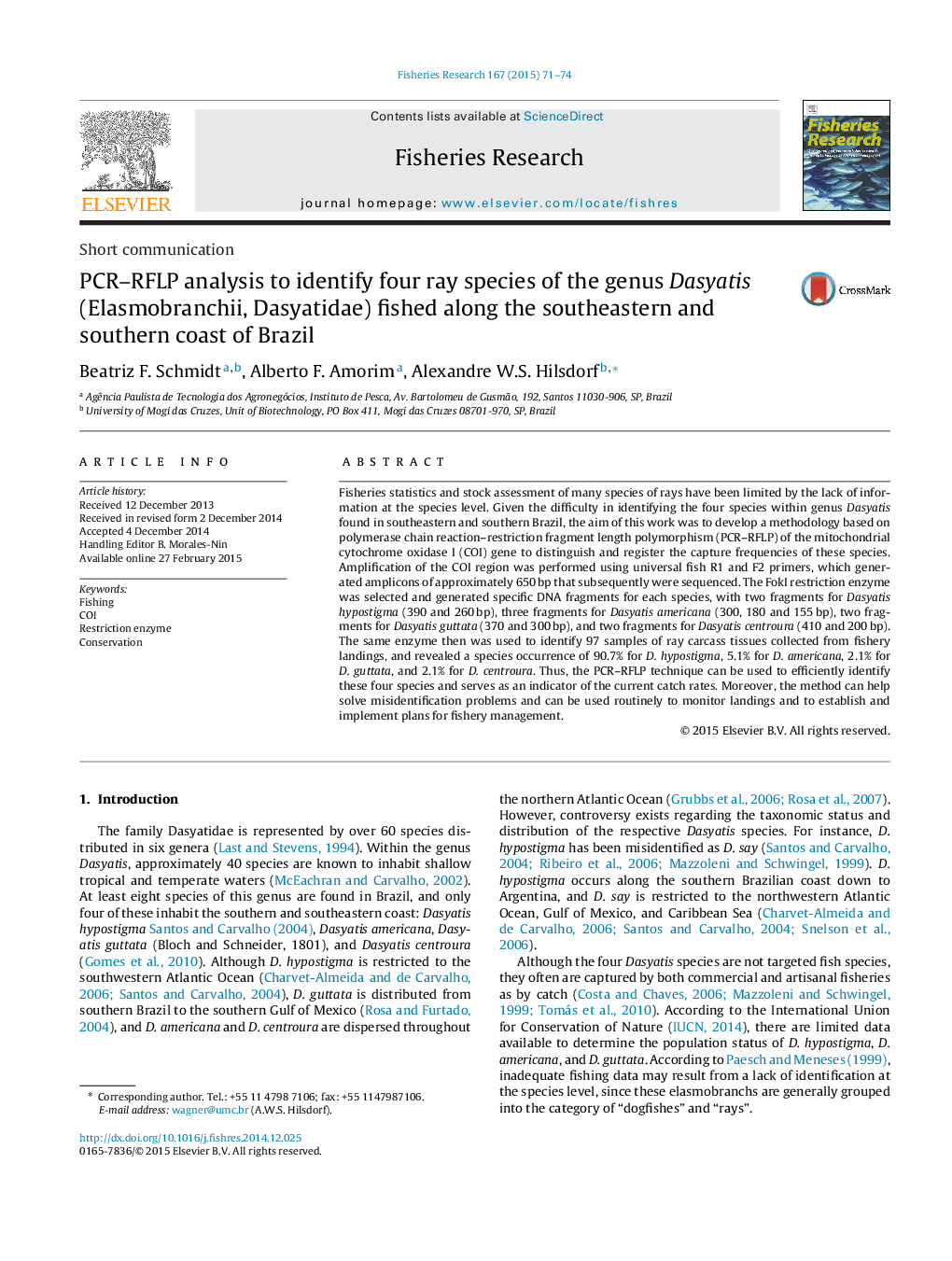| کد مقاله | کد نشریه | سال انتشار | مقاله انگلیسی | نسخه تمام متن |
|---|---|---|---|---|
| 4542892 | 1626801 | 2015 | 4 صفحه PDF | دانلود رایگان |

• PCR–RFLP was developed to identify the four Dasyatis species of southeastern and southern Brazil.
• The COI region of mitochondrial DNA was amplified.
• The FokI enzyme was used to generate specific DNA fragments for each species.
• The technique was used to identify ray carcasses collected in fishing landings.
• D. hypostigma was most abundant in the region.
Fisheries statistics and stock assessment of many species of rays have been limited by the lack of information at the species level. Given the difficulty in identifying the four species within genus Dasyatis found in southeastern and southern Brazil, the aim of this work was to develop a methodology based on polymerase chain reaction–restriction fragment length polymorphism (PCR–RFLP) of the mitochondrial cytochrome oxidase I (COI) gene to distinguish and register the capture frequencies of these species. Amplification of the COI region was performed using universal fish R1 and F2 primers, which generated amplicons of approximately 650 bp that subsequently were sequenced. The FokI restriction enzyme was selected and generated specific DNA fragments for each species, with two fragments for Dasyatis hypostigma (390 and 260 bp), three fragments for Dasyatis americana (300, 180 and 155 bp), two fragments for Dasyatis guttata (370 and 300 bp), and two fragments for Dasyatis centroura (410 and 200 bp). The same enzyme then was used to identify 97 samples of ray carcass tissues collected from fishery landings, and revealed a species occurrence of 90.7% for D. hypostigma, 5.1% for D. americana, 2.1% for D. guttata, and 2.1% for D. centroura. Thus, the PCR–RFLP technique can be used to efficiently identify these four species and serves as an indicator of the current catch rates. Moreover, the method can help solve misidentification problems and can be used routinely to monitor landings and to establish and implement plans for fishery management.
Journal: Fisheries Research - Volume 167, July 2015, Pages 71–74